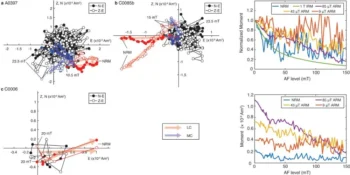The fashion world has long been synonymous with creativity, style, and individual expression. A new force is reshaping the industry—integrating artificial intelligence (AI) into fashion design and retail. The fusion of AI and fashion promises to revolutionize how trends are identified, designs are created, and consumer experiences are personalized. This marriage of technology and artistry pushes the boundaries of innovation and redefines the essence of what it means to be fashionable. In this article, we explore the significance of AI in fashion, its transformative impact, and the strategies required to navigate this dynamic landscape.
The Significance of AI in Fashion
Fashion is as much about creativity as it is about understanding consumer preferences. The significance of AI in fashion lies in its ability to process vast amounts of data from social media, e-commerce platforms, and historical trends to identify emerging fashion preferences and predict upcoming trends. AI algorithms can recognize patterns, analyze colors, textures, and styles, and provide designers with insights that inspire innovative creations. As fashion consumers seek personalized experiences and unique styles, integrating AI into fashion design and retail reflects our capacity to leverage technology to enhance creative expression.
AI in Fashion’s Influence
The impact of AI in fashion extends across various aspects of the industry, redefining how designers, retailers, and consumers interact with fashion.
- Design Inspiration: AI-powered tools can generate design ideas based on historical trends, allowing designers to draw inspiration from diverse sources and create unique pieces that resonate with consumers.
- Inventory Management: AI-driven demand forecasting helps retailers optimize inventory, reducing overstocking and waste while ensuring that popular items are always available.
- Personalized Shopping: AI algorithms analyze customer data to offer personalized shopping recommendations and style suggestions. This level of customization enhances the consumer shopping experience.
Balancing Creativity and Automation
While AI’s potential in fashion is immense, it also presents challenges that demand careful consideration. One central concern is striking the balance between creativity and automation. Fashion is inherently driven by artistic expression and personal aesthetics. Overreliance on AI-generated designs could lead to homogenized styles lacking the authenticity and emotion of human creativity.
Furthermore, ensuring that AI systems understand the nuances of fashion trends and cultural influences requires ongoing refinement and innovation. Developing algorithms that capture the complexity of fashion’s ever-evolving landscape is a challenge that requires collaboration between AI researchers and fashion experts.
Future of AI in Fashion
As AI continues to redefine fashion, several strategies can ensure its potential is maximized while challenges are addressed.
- Human-AI Collaboration: AI should be seen as a tool that enhances human creativity rather than replaces it. Collaborations between designers and AI algorithms can lead to innovative creations combining artistic vision and data-driven insights.
- Ethical Considerations: AI-generated designs raise questions about intellectual property and cultural sensitivity. Establishing ethical guidelines that respect creators’ rights and uphold cultural integrity is essential.
- Consumer Feedback: Involving consumers in the design process can provide valuable insights and ensure that AI-driven fashion solutions align with their preferences and expectations.
The influence of AI in fashion extends beyond individual garments—it shapes design processes, retail strategies, and the consumer’s relationship with style. However, the journey forward requires a balanced approach that preserves the uniqueness of human creativity while leveraging AI’s analytical power.
Conclusion
As the fashion industry evolves, the integration of AI stands as a testament to our ability to combine tradition with innovation. AI’s potential to predict trends, inspire new designs, and offer personalized shopping experiences reflects its transformative impact on fashion.
In the evolving narrative of fashion’s evolution, AI in fashion stands as a chapter that embodies our aspiration to blend technology with artistic expression. By fostering collaboration between designers, technologists, and consumers, we can harness AI’s transformative potential to create a fashion world where innovation, creativity, and individuality merge, offering a style that’s both cutting-edge and uniquely personal.














